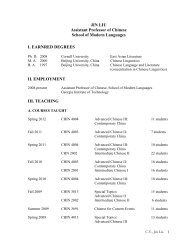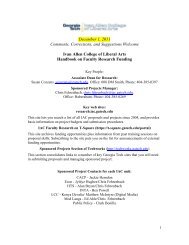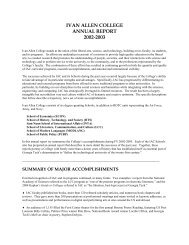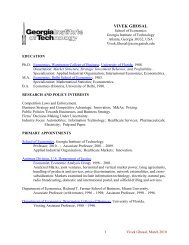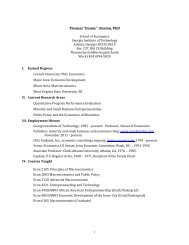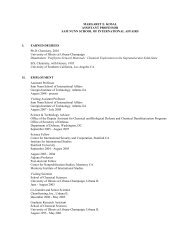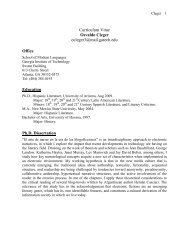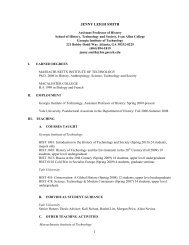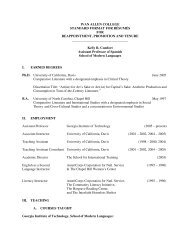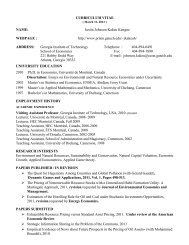Atlanta Housing - Georgia Institute of Technology
Atlanta Housing - Georgia Institute of Technology
Atlanta Housing - Georgia Institute of Technology
You also want an ePaper? Increase the reach of your titles
YUMPU automatically turns print PDFs into web optimized ePapers that Google loves.
A similar pattern was recorded for all AHA householders who were in the target<br />
population. Specifically, 52.1% were employed in 2004 and that percentage<br />
reach 63.6% in 2007. However, by 2010, the percentage had decreased to<br />
55.6%.<br />
In 2010 the 4,055 HOHs in the target population who were employed worked on<br />
average 32 hours per week. The hours worked per week decreased slightly between<br />
2007 and 2010, from 34 hours to 32 hours.<br />
A Generalized Estimation Equation was used to examine the factors that<br />
influenced employment. The model included observations on all heads <strong>of</strong><br />
households who were in the target population between 2004 and 2010 (33,051<br />
householders). Repeated observations were taken on the same household and<br />
as such the modeling procedure controlled for selectivity effects. The results<br />
were as follows:<br />
<br />
<br />
<br />
The work compliance policy increased the odds <strong>of</strong> a householder working by<br />
17%.<br />
However, living in a mixed-income development as opposed to a LIPH raised<br />
the odds <strong>of</strong> being employed by 400%. Likewise, using a housing choice<br />
voucher as opposed to living in a LIPH raised the odds <strong>of</strong> employment by<br />
76%.<br />
Women were 1.7 times more likely to be employed than were men.<br />
Receiving public assistance lowered the odds <strong>of</strong> working by 87%.<br />
<br />
As individuals aged, their odds <strong>of</strong> working lowered, i.e. by 3% each year.<br />
Every additional bedroom that a family required raised the odds <strong>of</strong> the<br />
householder working by 7%.<br />
Median household income <strong>of</strong> families affected by Grady revitalization increased<br />
from $7,080 in 2004 to $9,186 in 2010, or by 28%. Over the same timeframe,<br />
<strong>Atlanta</strong> Area Median Income increased by only 13.1%. Nevertheless, the average<br />
AHA householder was still extremely poor in 2010. Over one half had household<br />
incomes that were less than or equal to only 12.7% <strong>of</strong> the AMI in <strong>Atlanta</strong>, which<br />
was $71,800 in 2010.<br />
6 | P a g e



